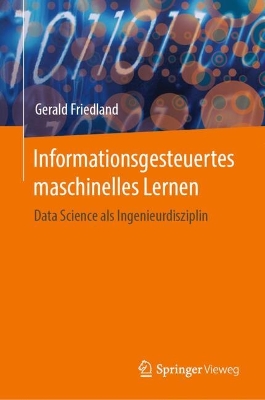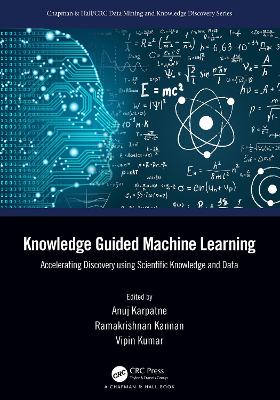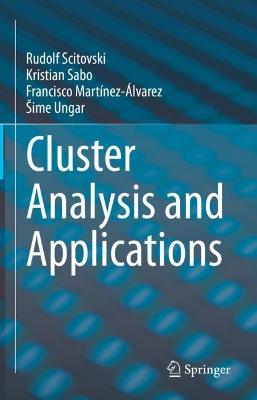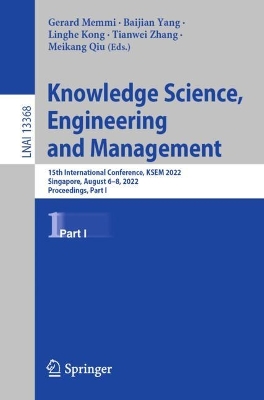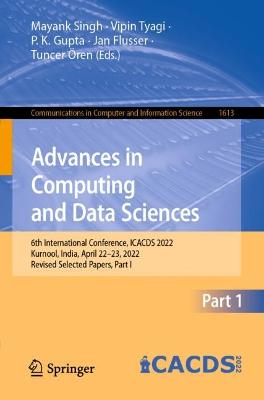Cluster Analysis and Applications
 portes grátis
portes grátis
Cluster Analysis and Applications
Martinez-Alvarez, Francisco; Ungar, Sime; Sabo, Kristian; Scitovski, Rudolf
Springer Nature Switzerland AG
07/2022
271
Mole
Inglês
9783030745547
15 a 20 dias
438
Descrição não disponível.
1.- Introduction. 2 Representatives.- 2.1 Representative of data sets with one feature. 2.1.1. Best LS-representative.- 2.1.2 Best `1-representative.- 2.1.3 Best representative of weighted data.- 2.1.4 Bregman divergences.- 2.2 Representative of data sets with two features.- 2.2.1 Fermat-Torricelli-Weber problem.- 2.2.2 Centroid of a set in the plane.- 2.2.3 Median of a set in the plane.- 2.2.4 Geometric median of a set in the plane.- 2.3 Representative of data sets with several features.- 2.3.1 Representative of weighted data.- 2.4 Representative of periodic data.- 2.4.1 Representative of data on the unit circle.- 2.4.2 Burn diagram.- 3 Data clustering.- 3.1 Optimal k-partition.- 3.1.1 Minimal distance principle and Voronoi diagram.- 3.1.2 k-means algorithm.- 3.2 Clustering data with one feature.- 3.2.1 Application of the LS-distance-like function.- 3.2.2 The dual problem.- 3.2.3 Least absolute deviation principle.- 3.2.4 Clustering weighted data.- 3.3 Clustering data with two or several features.- 3.3.1 Least squares principle.- 3.3.2 The dual problem.- 3.3.3 Least absolute deviation principle.- 3.4 Objective function F(c1, . . . , ck) = Pm i=1 min 1?j?k d(cj , ai).- 4 Searching for an optimal partition.- 4.1 Solving the global optimization problem directly.- 4.2 k-means algorithm II.- 4.2.1 Objective function F using the membership matrix.- 4.2.2 Coordinate Descent Algorithms.- 4.2.3 Standard k-means algorithm.- 4.2.4 k-means algorithm with multiple activations.- 4.3 Incremental algorithm.- 4.4 Hierarchical algorithms.- 4.4.1 Introduction and motivation.- 4.4.2 Applying the Least Squares Principle. 4.5 DBSCAN method.- 4.5.1 Parameters MinPts and 97 4.5.2 DBSCAN algorithm.- 4.5.3 Numerical examples.- 5 Indexes.- 5.1 Choosing a partition with the most appropriate number of clusters.- 5.1.1 Calinski-Harabasz index.- 5.1.2 Davies-Bouldin index.- 5.1.3 Silhouette Width Criterion.- 5.1.4 Dunn index.- 5.2 Comparing two partitions.- 5.2.1 Rand index of two partitions.- 5.2.2 Application of the Hausdorff distance.- 6 Mahalanobis data clustering.- 6.1 Total least squares line in the plane. 6.2 Mahalanobis distance-like function in the plane.- 6.3 Mahalanobis distance induced by a set in the plane.- 6.3.1 Mahalanobis distance induced by a set of points in R n.- 6.4 Methods to search for optimal partition with ellipsoidal clusters.- 6.4.1 Mahalanobis k-means algorithm 139 CONTENTS v.- 6.4.2 Mahalanobis incremental algorithm.- 6.4.3 Expectation Maximization algorithm for Gaussian mixtures.- 6.4.4 Expectation Maximization algorithm for normalized Gaussian mixtures and Mahalanobis k-means algorithm.- 6.5 Choosing partition with the most appropriate number of ellipsoidal clusters.- 7 Fuzzy clustering problem.- 7.1 Determining membership functions and centers.- 7.1.1 Membership functions. 7.1.2 Centers.- 7.2 Searching for an optimal fuzzy partition with spherical clusters.- 7.2.1 Fuzzy c-means algorithm.- 7.2.2 Fuzzy incremental clustering algorithm (FInc).- 7.2.3 Choosing the most appropriate number of clusters.- 7.3 Methods to search for an optimal fuzzy partition with ellipsoidal clusters.- 7.3.1 Gustafson-Kessel c-means algorithm.- 7.3.2 Mahalanobis fuzzy incremental algorithm (MFInc).- 7.3.3 Choosing the most appropriate number of clusters.- 7.4 Fuzzy variant of the Rand index.- 7.4.1 Applications.- 8 Applications.- 8.1 Multiple geometric objects detection problem and applications.- 8.1.1 Multiple circles detection problem.- 8.1.2 Multiple ellipses detection problem.- 8.1.3 Multiple generalized circles detection problem.- 8.1.4 Multiple lines detection problem.- 8.1.5 Solving MGOD-problem by using the RANSAC method.- 8.2 Determining seismic zones in an area.- 8.2.1 Searching for seismic zones.- 8.2.2 The absolute time of an event.- 8.2.3 The analysis of earthquakes in one zone.- 8.2.4 The wider area of the Iberian Peninsula.- 8.2.5 The wider area of the Republic of Croatia.- 8.3 Temperature fluctuations.- 8.3.1 Identifying temperature seasons.- 8.4 Mathematics and politics: How to determine optimal constituencies?.- 8.4.1 Mathematical model and the algorithm.- 8.4.2 Defining constituencies in the Republic of Croatia.- 8.4.3 Optimizing the number of constituencies.- 8.5 Iris.- 8.6 Reproduction of Escherichia coli. 9 Modules and the data sets.- 9.1 Functions.- 9.2 Algorithms.- 9.3 Data generating.- 9.4 Test examples.- 9.5 Data sets.- Bibliography.- Index.
Este título pertence ao(s) assunto(s) indicados(s). Para ver outros títulos clique no assunto desejado.
distance-like function;k-means;incremental algorithm;agglomerative hierarchical clustering;optimal partition;global optimization;multiple line detection
1.- Introduction. 2 Representatives.- 2.1 Representative of data sets with one feature. 2.1.1. Best LS-representative.- 2.1.2 Best `1-representative.- 2.1.3 Best representative of weighted data.- 2.1.4 Bregman divergences.- 2.2 Representative of data sets with two features.- 2.2.1 Fermat-Torricelli-Weber problem.- 2.2.2 Centroid of a set in the plane.- 2.2.3 Median of a set in the plane.- 2.2.4 Geometric median of a set in the plane.- 2.3 Representative of data sets with several features.- 2.3.1 Representative of weighted data.- 2.4 Representative of periodic data.- 2.4.1 Representative of data on the unit circle.- 2.4.2 Burn diagram.- 3 Data clustering.- 3.1 Optimal k-partition.- 3.1.1 Minimal distance principle and Voronoi diagram.- 3.1.2 k-means algorithm.- 3.2 Clustering data with one feature.- 3.2.1 Application of the LS-distance-like function.- 3.2.2 The dual problem.- 3.2.3 Least absolute deviation principle.- 3.2.4 Clustering weighted data.- 3.3 Clustering data with two or several features.- 3.3.1 Least squares principle.- 3.3.2 The dual problem.- 3.3.3 Least absolute deviation principle.- 3.4 Objective function F(c1, . . . , ck) = Pm i=1 min 1?j?k d(cj , ai).- 4 Searching for an optimal partition.- 4.1 Solving the global optimization problem directly.- 4.2 k-means algorithm II.- 4.2.1 Objective function F using the membership matrix.- 4.2.2 Coordinate Descent Algorithms.- 4.2.3 Standard k-means algorithm.- 4.2.4 k-means algorithm with multiple activations.- 4.3 Incremental algorithm.- 4.4 Hierarchical algorithms.- 4.4.1 Introduction and motivation.- 4.4.2 Applying the Least Squares Principle. 4.5 DBSCAN method.- 4.5.1 Parameters MinPts and 97 4.5.2 DBSCAN algorithm.- 4.5.3 Numerical examples.- 5 Indexes.- 5.1 Choosing a partition with the most appropriate number of clusters.- 5.1.1 Calinski-Harabasz index.- 5.1.2 Davies-Bouldin index.- 5.1.3 Silhouette Width Criterion.- 5.1.4 Dunn index.- 5.2 Comparing two partitions.- 5.2.1 Rand index of two partitions.- 5.2.2 Application of the Hausdorff distance.- 6 Mahalanobis data clustering.- 6.1 Total least squares line in the plane. 6.2 Mahalanobis distance-like function in the plane.- 6.3 Mahalanobis distance induced by a set in the plane.- 6.3.1 Mahalanobis distance induced by a set of points in R n.- 6.4 Methods to search for optimal partition with ellipsoidal clusters.- 6.4.1 Mahalanobis k-means algorithm 139 CONTENTS v.- 6.4.2 Mahalanobis incremental algorithm.- 6.4.3 Expectation Maximization algorithm for Gaussian mixtures.- 6.4.4 Expectation Maximization algorithm for normalized Gaussian mixtures and Mahalanobis k-means algorithm.- 6.5 Choosing partition with the most appropriate number of ellipsoidal clusters.- 7 Fuzzy clustering problem.- 7.1 Determining membership functions and centers.- 7.1.1 Membership functions. 7.1.2 Centers.- 7.2 Searching for an optimal fuzzy partition with spherical clusters.- 7.2.1 Fuzzy c-means algorithm.- 7.2.2 Fuzzy incremental clustering algorithm (FInc).- 7.2.3 Choosing the most appropriate number of clusters.- 7.3 Methods to search for an optimal fuzzy partition with ellipsoidal clusters.- 7.3.1 Gustafson-Kessel c-means algorithm.- 7.3.2 Mahalanobis fuzzy incremental algorithm (MFInc).- 7.3.3 Choosing the most appropriate number of clusters.- 7.4 Fuzzy variant of the Rand index.- 7.4.1 Applications.- 8 Applications.- 8.1 Multiple geometric objects detection problem and applications.- 8.1.1 Multiple circles detection problem.- 8.1.2 Multiple ellipses detection problem.- 8.1.3 Multiple generalized circles detection problem.- 8.1.4 Multiple lines detection problem.- 8.1.5 Solving MGOD-problem by using the RANSAC method.- 8.2 Determining seismic zones in an area.- 8.2.1 Searching for seismic zones.- 8.2.2 The absolute time of an event.- 8.2.3 The analysis of earthquakes in one zone.- 8.2.4 The wider area of the Iberian Peninsula.- 8.2.5 The wider area of the Republic of Croatia.- 8.3 Temperature fluctuations.- 8.3.1 Identifying temperature seasons.- 8.4 Mathematics and politics: How to determine optimal constituencies?.- 8.4.1 Mathematical model and the algorithm.- 8.4.2 Defining constituencies in the Republic of Croatia.- 8.4.3 Optimizing the number of constituencies.- 8.5 Iris.- 8.6 Reproduction of Escherichia coli. 9 Modules and the data sets.- 9.1 Functions.- 9.2 Algorithms.- 9.3 Data generating.- 9.4 Test examples.- 9.5 Data sets.- Bibliography.- Index.
Este título pertence ao(s) assunto(s) indicados(s). Para ver outros títulos clique no assunto desejado.


